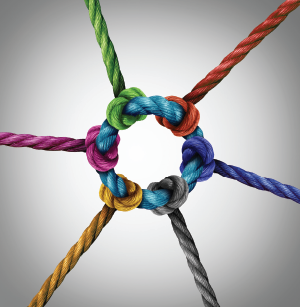
Lightspring/shutterstock.com
A faculty member at the University of California, San Francisco (UCSF) School of Medicine posed this question to a resident while attending rounds. Both were portraying a scene involving micro-aggression during Differences Matter, a three-day orientation for first-year medical students.
On the program’s first day, students are introduced to unconscious bias and micro-aggressions, which are dismissive or insensitive questions or phrases physicians unintentionally say to patients, students or trainees based on their age, gender, race, sexual orientation, ethnicity or religious background. Students then spend the next two days developing relationship-centered communication skills, such as how to greet patients respectfully and ask open-ended questions to help make each patient encounter more productive and emotionally comfortable.
“[Differences Matter] is designed to expose medical students to the UCSF culture of equity,” says Denise Davis, MD, clinical professor of medicine, specialist for diversity and general internist at UCSF School of Medicine. “We teach that bias is not a moral failing; it’s a habit of mind.”
No one—not researchers, scientists or clinicians—is immune to unconscious bias. These are social stereotypes that individuals across all professions form about other groups of people. Some schools are tackling unconscious bias head on and offering other diversity and inclusion training opportunities for faculty and medical students in hopes of producing better patient experiences and outcomes.
Multiple Training Layers
Medical schools are raising awareness about diversity and inclusion in many ways.
Back in 2015, UCSF also introduced a peer consultation group that targeted race relationships, language and culture for faculty, who met monthly for six months.
“These are people who want to improve their listening and communication skills across differences,” Dr. Davis says, adding that 12 out of more than 100 school faculty belonged to this voluntary group. “Through personal narratives, we were able to get beyond some of the limitations of our own knowledge about other people and groups and also did some case-based learning about how we could respond to differences in the classroom and in the clinic.”
That same year, Dr. Davis and another colleague from the American Academy on Communication in Healthcare introduced a voluntary mentoring program for faculty. During the two-hour workshop and subsequent booster session, the group reviews literature on the needs of minority medical students and trainees so faculty can better coach the school’s student mentors. So far, roughly 30 physicians have participated.


